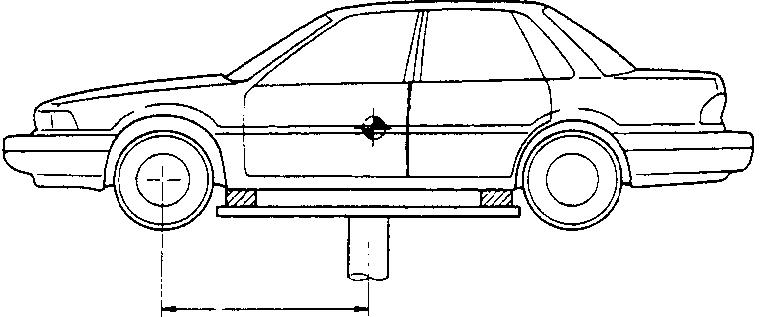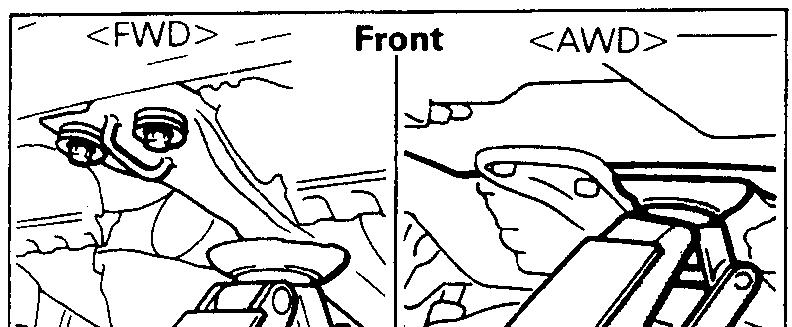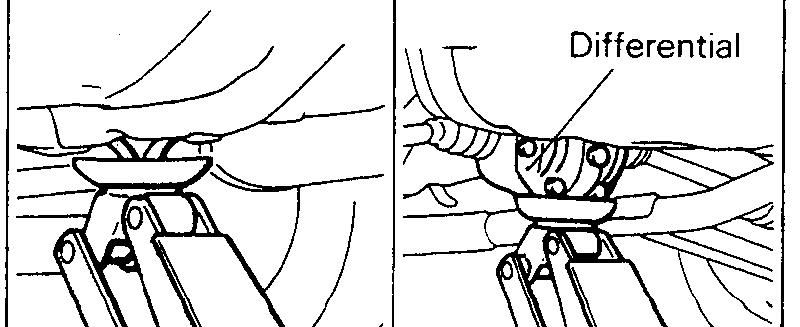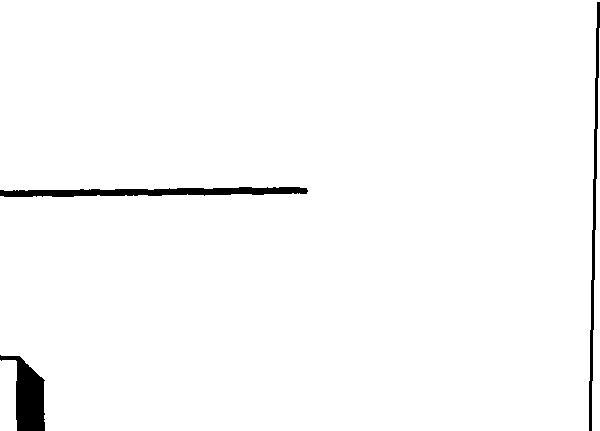
4 minute read
TOWING AND HOISTING
Sling type
Wheel lift type

Flat bed type

Sling type

Wheel lift type

Flat bed type

WRECKER TOWING RECOMMENDATION <FWD> FRONT TOWING PICKUP Caution This vehicle cannot be towed by a wrecker using sling-type equipment to prevent the bumper from deformation. If this vehicle is towed, use wheel lift or flat bed equipment.
The vehicle may be towed on its rear wheels for extended distances provided the parking brake is released. It is recommended that vehicles be towed using the front pickup whenever possible.
Manual transaxle vehicles may be towed on the front wheels, provided the transaxle is in neutral and the drive-line has not been damaged. The steering wheel must be clamped in the straight-ahead position with a steering wheel clamping device designed for towing service use.
Caution Do not use steering column lock to secure front wheel position for towing.
Automatic transaxle vehicle may be towed on the front wheels at speeds not to exceed 50 km/h (30 mob) for a distances not to exceed 30 km (18 miles).
Caution If these limits cannot be met, the front wheels must be placed on a tow dolly.
TOWING WHEN KEYS ARE NOT AVAILABLE
When a locked vehicle must be towed and keys are not available, the vehicle may be lifted and towed from the front. provided the parking brake is released. If not released, the rear wheels should be placed on a tow dolly.
SAFETY PRECAUTIONS
The following precautions should be taken when towing the vehicle. 1. DO NOT LIFT OR TOW THE VEHICLE BY ATTACHING TO
OR WRAPPING AROUND THE BUMPER. 2. Any loose or protruding parts of damaged vehicle such as hoods, doors, fenders, trim, etc., should be secured prior to moving the vehicle. 3. Operator should refrain from going under a vehicle while it is lifted by the towing equipment, unless the vehicle in adequately supported by satefy stands. 4. Never allow passengers to ride in a towed vehicle. 5. State and local rules and regulations must be followed when towing a vehicle.
<AWD>
Refer to the section “Special Handling Instructions for AWD Models”.
Frame contact support location

I
<FWD>: 1,020 mm (40.2 in.) <AWD>: 1,120 mm (44.1 in.)

OOAOO47
<FWD>

Rear


tAWD> I
HOISTING POST TYPE
Special care should be taken when raising the vehicle on a frame contact type hoist. The hoist must be equipped with the proper adapters in order to support the vehicle at the proper locations.
Caution When service procedures require removing rear suspension, fuel tank, spare tire and lift gate, place additional weight on rear end of vehicle or anchor vehicle to hoist to prevent tipping of center of gravity changes. FLOOR JACK
The usual type of floor jack is used at the following locations.
Front: <FWD> Under the mid point of centermember
tAWD> Under the mid point of crossmember
Rear: <FWD> Under the jack up bracket of rear floor pan <AWD> Under the rear differential
Cautions 1. Never use a jack at the lateral rod or rear suspension assembly. <FWD> 2. In order to prevent scarring the centermember <FWD> or crossmember <AWD>, place a piece of cloth on the jack’s contact surface (to prevent corrosion caused by damage to the coating). 3. A floor jack must never be used on any part of the underbody. 4. Do not attempt to raise one entire side of the vehicle by placing a jack midway between front and rear wheels.
This practice may result in permanent damage to the body.
LIFTING, JACKING SUPPORT LOCATION
<FWD>
<AWD>



WA0020


00A0021
Floor jack locations -e Approximate center of gravity
@ Frame contact hoist, twin post hoist or scissors jack (emergency) locations
EMERGENCY JACKING
Jack receptacles are located at the body sills to accept the scissors jack supplied with the vehicle for emergency road service. Always block opposite wheels and jack on level surface.




